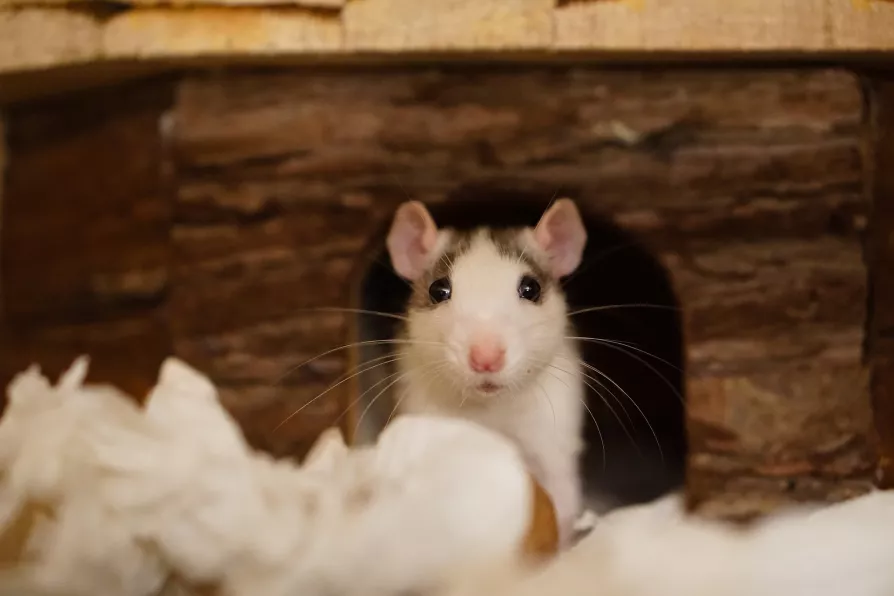Rather than hoping for the emergence of some new ‘party of the left,’ EMMA DENT COAD sees a broad alliance of local parties and community groups as a way of reviving democratic progressive politics


THE saying goes that you are never more than six feet away from a rat. Although it is likely that this fact was originally circulated by the Ministry of Agriculture to encourage hygiene within the home (a more realistic figure is apparently around 50 metres if you are in a city), rats do strongly prefer to live around humans. Our homes, farms, and cities provide places to live and abundant food.
Rats in turn have paid us back by being the unwilling subjects of scientific experiments for over a century (hence the term “lab rat)”. Rat biology is deemed similar enough to our own that we have used them to study the mechanisms of many diseases, how the immune system responds to them, and how we might develop medicines to prevent them.
The technique has been extremely successful in analysing how stress, housing quality and diet increases the odds of rats (and humans) developing diabetes, as well as how genetic traits are related to the susceptibility to certain types of cancers. While there is much reasonable controversy over whether animals should suffer death and disease for our benefit, not all experiments involving rats cause them physical harm. Rats are smart and have good memories, which makes them ideal for cognitive experiments that look at how their conditions influence their cognitive performance.
A favourite format for psychologists to test cognition is the use of a maze. One such setup, known as the Morris water maze, puts the rats in a tub of water (don’t worry, rats are very good swimmers) with a little platform that they can swim to and be rescued from. The water level is then increased so that the platform lies just below the surface and the water is dyed to make it opaque. The rats are then put back in the pool to see if they remember the location of the platform without being able to see it, if they cannot do this then it shows that their memory has been affected.
Another experiment called the Barnes maze puts the rat on a circular table with identical holes around the edge, where the rat can escape through only one of the holes. There are visual cues such as colours and shapes near the holes to guide the rat. Putting the rat on the table repeatedly will show whether the rat remembers the cues which guide it to the correct hole or whether it wanders around and finds the correct hole by chance.
Recently, scientists at the University of Richmond in Virginia, USA, wanted to test the intelligence of rats by giving them a more complicated task to master. So they built little cars for the rats. The cars are operated by a rat holding onto a wire at the front of the vehicle. When a rat grips the wire it completes a circuit through the metal plate that the rat is sat on, making the car go forward.
As incredibly cute as the result may be, trying to teach a rat to drive a car is not an easy task. They broke the learning process down into five stages: accustoming the rats to being near the vehicle, entering into the cab, touching the bar at the front, driving a short distance, and eventually driving a longer distance. At each stage the rats were fed sugary cereal to reinforce good behaviour. Over time this taught the rats that to get cereal they needed to get into the car and drive towards some cereal being offered from above, even learning to steer the car in the direction they wanted.
The rats probably aren’t going to be parallel parking or reversing round corners any time soon, but it has confirmed that they are capable of completing complex tasks. In addition to this, the scientists collected interesting data from the rats as they were learning, to see how the new experience changed the level of stress hormones in their droppings.
While the results are scientifically rigorous, and present the possibility for future health improvement, we are also immediately compelled to draw parallels between the rats’ lives and our own. Some of the findings particularly appeal to our sense of self.
For example, some of the rats were housed in an “enriched” environment, consisting of a bigger cage with multiple levels, as well as toys that were swapped each week, making for happier, more active rats. These rats generally made it further through the steps towards learning to drive and showed far less reluctance to enter the car.
More intriguing still, rats that had spent time driving showed improvements in the ratio between two metabolites that are linked with better emotional resilience. Emotional resilience increases an animal’s ability to maintain psychological stability throughout times of stress and uncertainty. Being unable to bounce back after these stressful episodes can develop into various types of poor mental health. By learning a stimulating new skill, these rats had changes in the production of chemicals associated with more stable mental health and a lower incidence of depression.
The experiment is a scientifically rigorous result. But should we be cautious about extrapolating from rats to humans? After all, drugs that work in rats do not always pass clinical trials in humans. While we recognise this, as is so often the case in objects of scientific study, what is at stake is not just bare facts without context, but the narratives of our own lives. We think science can provide us with a profound and beautiful basis for these narratives, and strengthen our politics.

A maverick’s self-inflicted snake bites could unlock breakthrough treatments – but they also reveal deeper tensions between noble scientific curiosity and cold corporate callousness, write ROX MIDDLETON, LIAM SHAW and MIRIAM GAUNTLETT
Science has always been mixed up with money and power, but as a decorative facade for megayachts, it risks leaving reality behind altogether, write ROX MIDDLETON, LIAM SHAW and MIRIAM GAUNTLETT














